Leaking Underground Storage Tank (UST) Services
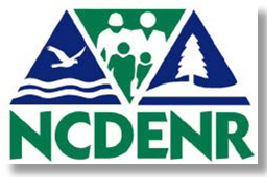
Fuel leaks from home heating oil storage tanks are regulated by NCDENR, and a NC-licensed geologist or engineer must help evaluate any resulting environmental contamination.
GMA has an exceptional level of corporate and individual experience with UST assessment and remediation. Our outstanding success at UST assessment and remediation is demonstrated by our impressive record of closing more than 400 UST incidents in the 17 years since NC’s risk-based assessment and cleanup rules became active in late 1998. During the 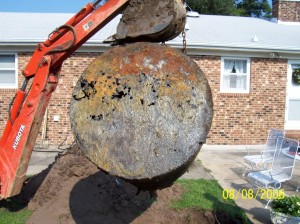 last 30 years, GMA has successfully completed nearly 1,000 leaking UST assessment and remediation projects. Because UST rules and regulations are surprisingly complicated and rigid, GMA encourages all homeowners, property sellers and buyers, and real estate agents to carefully select an experienced environmental consultant to help guide them through the process.
last 30 years, GMA has successfully completed nearly 1,000 leaking UST assessment and remediation projects. Because UST rules and regulations are surprisingly complicated and rigid, GMA encourages all homeowners, property sellers and buyers, and real estate agents to carefully select an experienced environmental consultant to help guide them through the process.
Tank Owner Fact Sheets:
What to Expect with the Process of Removing a Leaking Underground Storage Tank ![]()
What to Expect if a Notice of Residual Petroleum (NORP) is Required by NCDENR ![]()
Frequently Asked Questions about Leaking USTs and Property Transaction Environmental Assessments (Phase I and II ESAs)
 USTs used for resale, motor fuel USTs used for fueling company vehicles or used for resale, and motor fuel USTs at farms and residences larger than 1100 gallons in size. Non-regulated tanks, often referred to as non-commercial or residential tanks, include all heating oil tanks used for consumptive purposes under 1100 gallons in size, farm and residential motor fuel tanks less than 1100 gallons in size, and any UST under 110 gallons in size.
USTs used for resale, motor fuel USTs used for fueling company vehicles or used for resale, and motor fuel USTs at farms and residences larger than 1100 gallons in size. Non-regulated tanks, often referred to as non-commercial or residential tanks, include all heating oil tanks used for consumptive purposes under 1100 gallons in size, farm and residential motor fuel tanks less than 1100 gallons in size, and any UST under 110 gallons in size.
Guidelines have been established by the NCDENR for the proper closure of regulated USTs. If you are closing a regulated tank, there are several requirements for closing them properly, including notifying your regional NCDENR office of the ta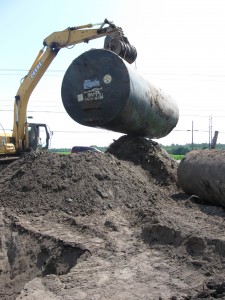 nk closure, and sampling at the time of closure to determine if a leak has occurred. Non-regulated USTs are exempt from the closure regulations required for regulated tanks. However, if you are interested in removing or closing a non-regulated tank, it is a good idea to remove any remaining fluids in the tank, to collect soil samples to determine if a leak has occurred, and to either remove and dispose of the tank or close it in place using environmental foam. Old, out of use USTs on a property, particularly at residential properties, can cause problems if you decide to put the property on the market. The presence of USTs must be disclosed prior to the sale of the property. Numerous sales have been delayed and even terminated because the property owner had not addressed the environmental issues that are present with an underground storage tank. GMA has extensive experience dealing with proper UST closure and removal practices, and can provide turnkey UST closure services for regulated and non-regulated tanks. For more information on UST closure guidelines, visit the NCDENR-DWM, UST Section home page. A link to this site is available on our Links page.
nk closure, and sampling at the time of closure to determine if a leak has occurred. Non-regulated USTs are exempt from the closure regulations required for regulated tanks. However, if you are interested in removing or closing a non-regulated tank, it is a good idea to remove any remaining fluids in the tank, to collect soil samples to determine if a leak has occurred, and to either remove and dispose of the tank or close it in place using environmental foam. Old, out of use USTs on a property, particularly at residential properties, can cause problems if you decide to put the property on the market. The presence of USTs must be disclosed prior to the sale of the property. Numerous sales have been delayed and even terminated because the property owner had not addressed the environmental issues that are present with an underground storage tank. GMA has extensive experience dealing with proper UST closure and removal practices, and can provide turnkey UST closure services for regulated and non-regulated tanks. For more information on UST closure guidelines, visit the NCDENR-DWM, UST Section home page. A link to this site is available on our Links page.
 Trust Fund. Eligibility for either fund is determined by a combination of several factors, including who is requesting access to the fund, when the release from the UST was discovered and reported, and if the UST (commercial) was upgraded at the time the release occurred, to name a few. Access to either fund may be granted only after specified deductibles are met (maximum of up to $2000 in the non-commercial fund, and $20,000 to $75,000 in the commercial fund). A description of what types of tanks are considered commercial and non-commercial is given above in the FAQ’s question regarding removal of USTs.
Trust Fund. Eligibility for either fund is determined by a combination of several factors, including who is requesting access to the fund, when the release from the UST was discovered and reported, and if the UST (commercial) was upgraded at the time the release occurred, to name a few. Access to either fund may be granted only after specified deductibles are met (maximum of up to $2000 in the non-commercial fund, and $20,000 to $75,000 in the commercial fund). A description of what types of tanks are considered commercial and non-commercial is given above in the FAQ’s question regarding removal of USTs.
In order to access the fund, a potentially eligible party must submit a Trust Fund application. The application and required supporting documentation are submitted to the Trust Fund Branch for determination of the applicant’s eligibility. GMA often uses an eligibility flowchart issued by the NCDENR to help determine if an interested party has a chance at getting into the fund, and which, if any, deductible can be expected. GMA has extensive experience with application procedures and administration of the State LUST Commercial and Non-Commercial Trust Funds. For further information, you can visit the Division of Waste Management’s UST Trust Funds website.
 clients to periodically sign financial reimbursement claim forms when GMA seeks repayment from the STF. Reimbursement payments come to the client in the form of a two-party check that is signed by the client, and forwarded to GMA for payment. Prior to entering into a “co-pay” contract with GMA, the client must first meet their assigned deductible, if applicable. Therefore, such a contract stipulates that the “co-pay” arrangement takes effect only once the STF agrees that a client has met their assigned deductible. The “co-pay” contract allows clients to meet their responsibilities in accordance with the requirements issued by the state without having to worry about financial issues. In essence, the assessment and cleanup processes at a site become “financially transparent” to the client.
clients to periodically sign financial reimbursement claim forms when GMA seeks repayment from the STF. Reimbursement payments come to the client in the form of a two-party check that is signed by the client, and forwarded to GMA for payment. Prior to entering into a “co-pay” contract with GMA, the client must first meet their assigned deductible, if applicable. Therefore, such a contract stipulates that the “co-pay” arrangement takes effect only once the STF agrees that a client has met their assigned deductible. The “co-pay” contract allows clients to meet their responsibilities in accordance with the requirements issued by the state without having to worry about financial issues. In essence, the assessment and cleanup processes at a site become “financially transparent” to the client.  Petroleum’ with the register of deeds when a release from an underground storage tank (UST) is not cleaned up to unrestricted use standards”. Deed recordation must be completed prior to conveyance of the property, and/or prior to receiving a “Notice of No Further Action” letter from the NCDENR closing out the incident unless all contamination has been eliminated from the site.
Petroleum’ with the register of deeds when a release from an underground storage tank (UST) is not cleaned up to unrestricted use standards”. Deed recordation must be completed prior to conveyance of the property, and/or prior to receiving a “Notice of No Further Action” letter from the NCDENR closing out the incident unless all contamination has been eliminated from the site.
For UST incidents ranked low-risk, if groundwater or soil contamination remains at the site in excess of the 15A NCAC 2L or Residential MSCC standards, respectively, deed recordation MUST be completed prior to the NCDENR issuing a “NFA”. Costs to prepare the deed recordation are reimbursable through the State LUST trust fund. Many residents are angered that they must attach documentation to their deed that may cause the property value to decrease. However, as it currently stands, recordation is required to gain a “NFA” from the NCDENR.
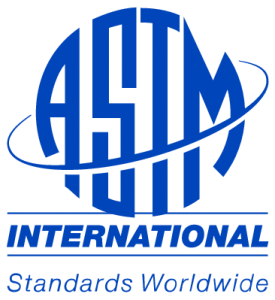 These assessments may be requested to determine if any potential or existing environmental problems are associated with the property prior to consideration of purchase. Phase I and Phase II ESAs are often required by lending institutions prior to granting a loan to a perspective buyer. Most ESA and ETS are preformed using ASTM guidelines. ESA are sometimes requested even when it is not required by lending institutions in order to help protect the buyer from liability for any pre-existing environmental problems at the subject property.
These assessments may be requested to determine if any potential or existing environmental problems are associated with the property prior to consideration of purchase. Phase I and Phase II ESAs are often required by lending institutions prior to granting a loan to a perspective buyer. Most ESA and ETS are preformed using ASTM guidelines. ESA are sometimes requested even when it is not required by lending institutions in order to help protect the buyer from liability for any pre-existing environmental problems at the subject property.
The value of completing environmental property assessments increased following passage of the Comprehensive Environmental Response, Compensation, and Liability Act (CERCLA) in 1980,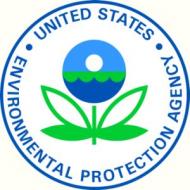 and the concept of “Due Diligence” and the “innocent purchaser defense”. This defense allows a property owner to be protected against liability when contamination is discovered on the property after the property has already been purchased if an environmental assessment was completed prior to the purchase and no issues were identified. Site-specific conditions, site history, and requirements of lending institutions or needs of perspective buyers will dictate which type of environmental property assessment is appropriate. An ETS is not as comprehensive as a ESA, so completing an ETS is most appropriate when the subject property is relatively small (less than a few acres), and it has never been developed or whose historical uses have been agricultural or residential. In addition, an ETS may not be accepted by lending institutions as adequate documentation of the environmental conditions for a given property. Completion of a ESA is most appropriate when the subject property is a larger size, contains numerous structures, has been developed for many years, and/or whose historical uses have been varied, particularly in the case of commercial and/or industrial uses. The known presence of nearby contamination sources may also be a good reason to perform a Phase I ESA. Because a Phase I ESA does not include sampling and testing of soil or water, it is often used as a starting point for assessing properties with an unknown history, or if the property is undeveloped. A Phase II ESA, which may include soil, water, and/or asbestos sampling and testing, is often recommended when potential or existing environmental problems are identified during the Phase I ESA or known prior to purchase, such as the identification of motor fuel USTs on the property.
and the concept of “Due Diligence” and the “innocent purchaser defense”. This defense allows a property owner to be protected against liability when contamination is discovered on the property after the property has already been purchased if an environmental assessment was completed prior to the purchase and no issues were identified. Site-specific conditions, site history, and requirements of lending institutions or needs of perspective buyers will dictate which type of environmental property assessment is appropriate. An ETS is not as comprehensive as a ESA, so completing an ETS is most appropriate when the subject property is relatively small (less than a few acres), and it has never been developed or whose historical uses have been agricultural or residential. In addition, an ETS may not be accepted by lending institutions as adequate documentation of the environmental conditions for a given property. Completion of a ESA is most appropriate when the subject property is a larger size, contains numerous structures, has been developed for many years, and/or whose historical uses have been varied, particularly in the case of commercial and/or industrial uses. The known presence of nearby contamination sources may also be a good reason to perform a Phase I ESA. Because a Phase I ESA does not include sampling and testing of soil or water, it is often used as a starting point for assessing properties with an unknown history, or if the property is undeveloped. A Phase II ESA, which may include soil, water, and/or asbestos sampling and testing, is often recommended when potential or existing environmental problems are identified during the Phase I ESA or known prior to purchase, such as the identification of motor fuel USTs on the property.

